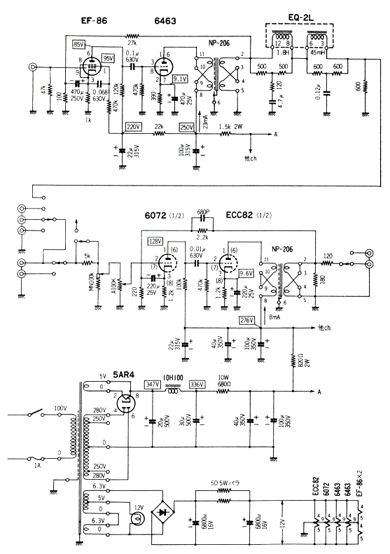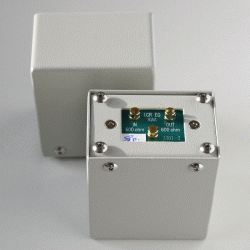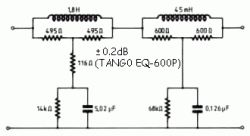Inductive
RIAA deemphasis Networks
noticeable
worldwide interest in the using of Inductive
RIAA networks has always been driven by the
desire to obtain the best possible sound quality.
The RIAA emphasis (at the recording) , a process
necessary to reduce the amplitude of lower frequency
and amplify the higher ones for mechanical reasons
(primary to efficiently write audio information
on vinyl surface ), was historically obtained
by a passive LCR network. Clearly the corresponding
RIAA deemphasis can be obtained at the best
(i.e. with the maximum accuracy) only by a similar
dual network
In
a theoretical way, any transfer function can
be synthesized by an LCR network (passive solution)
or by an active RC network (where this network
is placed in the feedback loop of an operational,
or similar, amplifier).
Audiophile community seems to refuse the active
solution since the RC network is placed around
a feedback loop ( no matter if the active device
is a vacuum tube or a solid state amplifier)
and for good reasons, since there is an historical,
anecdotal and technical evidence that feedback
amplifiers alter sound quality: for this reason
the only acceptable way to build a good phono
preamp is by the use of a passive stage (split
or not around gain stages ).
For
economic reasons passive RIAA deemphasis networks
are rarely in the form of a LCR quadripole (see
schematic of the Tango EQ-600P) which is the
only way to obtain the maximum accuracy, but
appear (like 99% of all phono stages) in the
lighter and less accurate form of a RC network.
 Japanese
Phono with Inductive RIAA, (from Radio
Gijutsu, M. Yoshio Nasu, 1984)
Japanese
Phono with Inductive RIAA, (from Radio
Gijutsu, M. Yoshio Nasu, 1984)
|
|


LCR
Deemphasis Network(Tango EQ-600P)
|